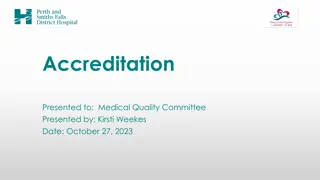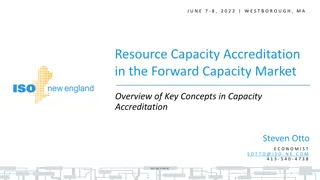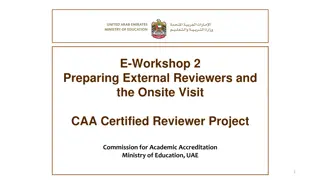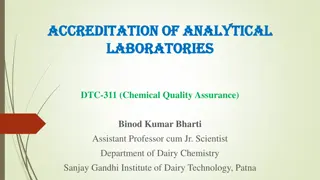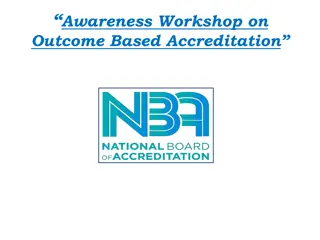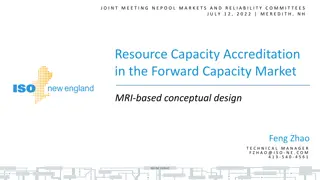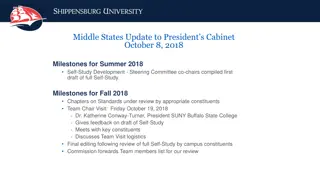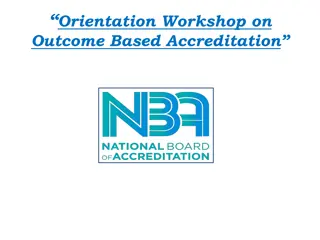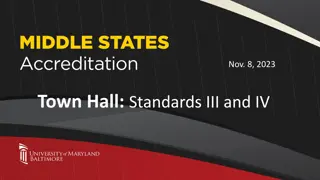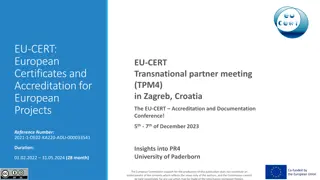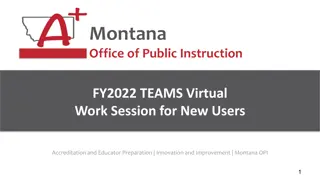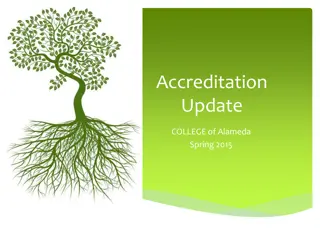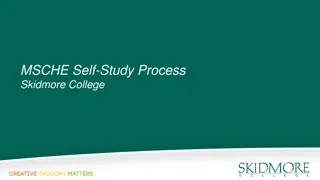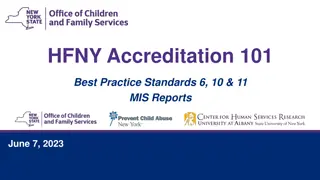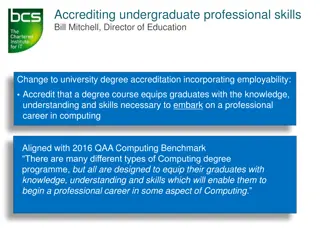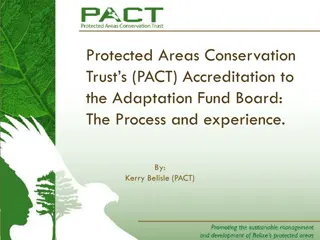Mission College Accreditation Self-Evaluation Process Overview
Mission College prepares for accreditation by conducting a self-evaluation every 6 years to ensure institutional excellence and improvement. The process involves adherence to accreditation standards, formation of writing teams, timeline of preparation, kickoff events, and recognition of team chairs.
Download Presentation

Please find below an Image/Link to download the presentation.
The content on the website is provided AS IS for your information and personal use only. It may not be sold, licensed, or shared on other websites without obtaining consent from the author.If you encounter any issues during the download, it is possible that the publisher has removed the file from their server.
You are allowed to download the files provided on this website for personal or commercial use, subject to the condition that they are used lawfully. All files are the property of their respective owners.
The content on the website is provided AS IS for your information and personal use only. It may not be sold, licensed, or shared on other websites without obtaining consent from the author.
E N D
Presentation Transcript
Mission College Preparation of the Accreditation Self-Evaluation WVMCCD Board of Trustees November 19, 2013
Overview and Purpose What is the purpose of Accreditation? An effective institution ensures that its resources and processes support student learning, continuously assesses that learning, and pursues institutional excellence and improvement. Why do we do a Self-Evaluation? How often? 6 Year Cycle
Accreditation Standards Standards in Brief I: Institutional Mission and Effectiveness II: Student Learning Programs and Services III: Resources (Human, Physical, Fiscal, Technology) IV: Leadership and Governance
Self Evaluation Document Preparation Structure Accreditation Oversight Committee GAP serves as the oversight committee Accreditation Steering Committee Includes Faculty Liaison, Accreditation Officer, Document Editor, and Researcher 4 Standards Writing Teams Focused teams for collecting evidence and writing; Teams Include Faculty, Classified Staff, & Administrators
Timeline of Preparation Fall 2012 Standards Teams completion of templates and initial identification of evidence Spring 2013 Initial review, additional evidence gathering, begin pulling into one comprehensive draft Summer 2013 Identification of gaps; continue editing Fall 2013 Fill in gaps; targeted groups review for accuracy and thoroughness
Process Kickoff Standards Teams identified Spring/Summer 2012 Full Teams Kickoff event August, 2012 Training on standards and rubrics Process of discovery and gathering evidence Collaboration on ANGEL learning management Resource binders Reference materials Sample templates Potential locations for evidence
Team Chairs Recognition I: Institutional Mission and Effectiveness: Kathy Henderson & Zita Melton with Daniel Peck II: Student Learning Programs and Services: Sarah Sullivan & Sarah Randle; Theresa Lawhead & Lucia Moreno; Carol Brockmeier & John Spencer with Tim Karas, Penny Johnson, Rita Grogan III: Resources (Human, Physical, Fiscal, Technology): Cathy Cox & Kena Rogers; Pat Hudak & Greg Shaw; Clement Lam & My Loi with Rick Bennett, Mina Jahan IV: Leadership and Governance: Dianne Dorian &Susan Monahan with Laurel Jones, Penny Johnson
Participatory Involvement Structure of the Standards Teams Co-chairs of Faculty and Classified Staff Members include faculty, classified staff, administrators, & students Draft made available online in late Spring Ability to post feedback Recurring updates and reminders for feedback to college Targeted visits to participatory and operational groups Academic Senate, Classified Senate, GAP, Division Council, Student Services Council, Counseling Department meeting, Curriculum Cmt, Institutional Effectiveness Cmt, Technology Cmt, and more
Online Document https://sites.google.com/site/missionaccreditation/
Addressing Action Items Through this Self Evaluation, the College has identified Actionable Improvement Plans The college is already working to address identified areas for improvement Goal to address areas prior to March Site Visit Two primary areas of emphasis Distance Learning (infrastructure, training, monitoring) Student Learning Outcomes (documentation of assessment, linkage to program and institutional outcomes)
Final Steps Remaining Stages of Preparing Document Final formatting and editing Insertion of final pieces of evidence Final Draft review by primary participatory groups Already given to GAP, Academic Senate, and Classified Senate Final formatted version available by start of December Mailed to ACCJC in January
Site Visit Preparation Preparing Access to Evidence Posting all evidence online and creating thumb drives for visiting team Messaging to College Campus Creating document summaries and brief mini-videos to raise awareness prior to the visit Preparation of team room and meeting schedule Site Visit in March 2014
Post Site Visit ACCJC likely will take action in June The college will continue to address identified areas for action



